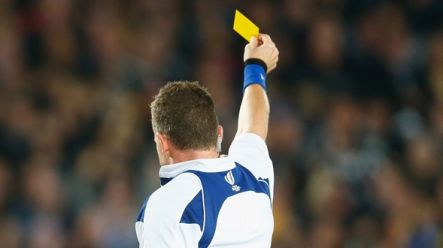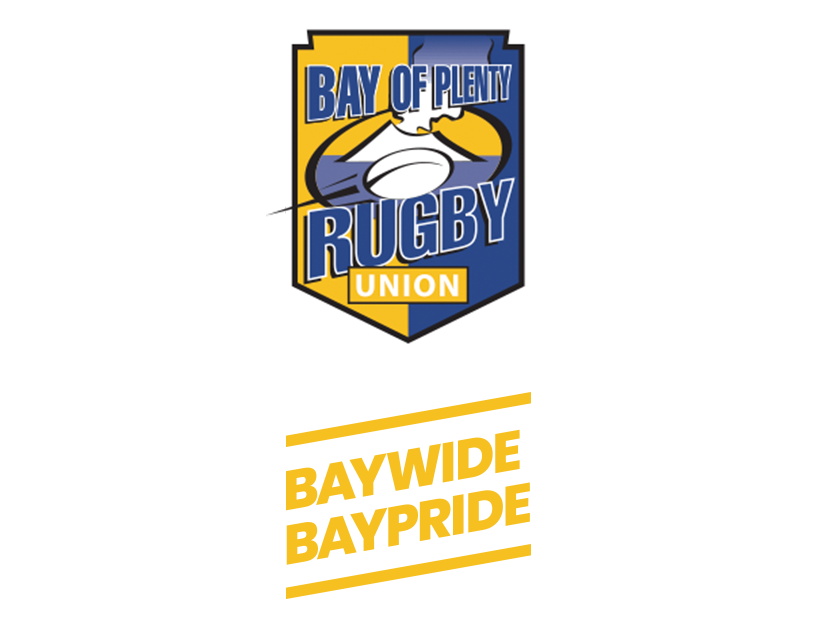
Weekly Law Questions - Week 3

FOUL PLAY THEME
Have a go! Support your answers with relevant Law Reference and Sanction. Answers will be listed in next week's Law Questions.
Referees - bring your answers to your local evening sessions next week for discussion.
Thanks to Graeme Meyrick for compiling. Want to get in touch to discuss law? Contact meyrick@xtra.co.nz
A defender is penalised for punching for which the referee issues a yellow card. Before the kick is taken this defender is guilty of further misconduct. What sanction must the referee apply?
While play is in progress a defender in touch punches an attacker also in touch. This occurs in line with the 22. Play stops when the ball goes into touch 5 metres from the defender’s goal line. The referee admonishes the defender and awards a penalty.
The ball has gone into touch. The referee then observes an incident of foul play near the centre of the field and awards a penalty. Where is the mark for the penalty?
Two opponents are running for the ball jostling shoulder-to-shoulder. What should the referee rule?
An AR signals Foul Play. At the next stoppage in play the AR reports to the referee that a Red player shoulder charged a Blue player and that the Blue player retaliated by punching the Red player. What action should the referee take?
A player who is onside and standing at the offside line, prevents an opponent from tackling the ball carrier. What should the referee rule?
At a penalty an attacker takes a quick tap and runs forward intentionally into a retiring defender in an attempt to be awarded a further penalty. What does the referee rule?
At a penalty the ball is tap kicked and passed to a teammate who drives forward. Immediately team-mates bind each side of the ball carrier in a wedge formation. Is this action permitted?
At a ruck the scrum-half of the team in possession is gesturing wildly and remonstrating for a penalty. Should the referee penalise this player for dissent?
Week 2 - ANSWERS
1. What can the process designed to protect the head, neck and throat area (“Head Contact”) of players be applied to?
- High tackles
- Shoulder charges
- Dangerous cleanouts
- Head-to-head collisions
- Leading elbow / forearm
2. With regard to head contact, what considerations should be taken into account when determining whether or not foul play has occurred?
- Intentional
- Reckless
- Avoidable
3. What is abuse?
It can be physical or verbal – physical abuse includes biting, punching, contact with the eye(s), striking with the hand and/or arm, head or knees, stamping, trampling, kicking or tripping (Law 9.12)
4. How must a player not tackle an opponent?
· Early, late or dangerously – dangerous tackling includes tackling above the shoulder line (Law 9.13)
5. When can a player be pushed, held, and/or obstructed?
· At a scrum, ruck or maul (Law 9.15)
6. How must a player charge or knock down an opponent?
· By attempting to grasp the opponent (Law 9.16)
7. What is considered to be dangerous play in a scrum?
- a. Front rows rushing against each other
- b. Front row players pulling an opponent
- c. A front row player intentionally lifting an opponent off the ground or upwards out of the scrum
- d. Intentionally collapsing the scrum
- (Law 9.19 – PK)
8. What is considered to be dangerous play in a ruck or maul?
- a. Charging in without binding
- b. Contact with an opponent above the shoulder
- c. Intentionally collapsing the ruck or maul
- (Law 9.20 – PK)
- 9. If a ball carrier hands off an opponent, how must this be done?
- · Without excessive force (Law 9.24 – PK)
10. What must a player not do after an opponent has just kicked the ball?
· Charge or obstruct the kicker (Law 9.25 – PK)
Options:
- a. At the place of infringement, or
- b. Where the ball land or is next played but not nearer than 15 metres from the touchline, or
- c. If the ball, is kicked directly into touch, on the 15-metre line in line with where the ball crossed the touchline, or
- d. If the ball lands in-goal, touch-in-goal or on or over the dead-ball line, five metres from the goal line in line with where the ball crossed the goal line and at least 15 metres from the touchline, or
- e. If the ball hits a goal post or crossbar, where the ball lands
Article added: Thursday 22 April 2021

BAY OF PLENTY RUGBY UNION
HIGH PERFORMANCE CENTRE
52 MIRO STREET
MOUNT MAUNGANUI
EMAIL OFFICE@BOPRUGBY.CO.NZ
SIGN UP TO THE BAY OF PLENTY RUGBY
E-NEWSLETTER
